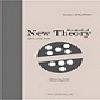A Generalized Mathematical Model of Hard-to-treat Infections with Culturing and Antibiotic Susceptibility Testing
A mathematical model for hard-to-treat infections with culturing and antibiotic susceptibility testing (CAST) as an intervention strategy in a population is formulated and analysed. The analysis of the model has been done qualitatively to investigate the existence and stability of equilibria. Using the Lyapunov function, the disease-free equilibrium of the model proved to be globally asymptotically stable with respect to the threshold quantity R_c1. However, the local stability of the endemic equilibrium is investigated using the method of row elimination. The model was validated using the Tuberculosis case in South Africa, and the result reveals that patients without adopting CAST strategy are prone to drug resistance and delay in quick response to the treatment regimen. On the contrary, individuals who have adopted the strategy have shown greater recovery potential from the infection. Based on that, self - medication, blind prescription should be avoided to curtail the consequences of drug resistance.
Keywords:
Hard-to-treat infections, Antibiotics susceptibility testing Global stability, Culturing, Lyapunov function,
___
- M. L. Graber, The Incidence of Diagnostic Error in Medicine, Biomedical Journal Quality Safety, 22(2013) 21 – 27.
- J. Kaur and H. Kaur, Advantages of Effectiveness of Bacterial Culture in Medical Laboratories, International Journal of Advance Research 3(8) (2015) 1028 – 1039.
- W. M. Dunne Jr, M. Jaillar, O. Rochas, A. V. Belkum, Microbial Genomics and Antimicrobial Susceptibility Testing, Expert Review of Molecular Diagnostics (2017). DOI: 10.1080/47377159.2017.1283220. 15 pages.
- A. Kanabus, Information About Tuberculosis, Global Health Education GHE (2017), www.tbfacts.org
- U. S. Bagul, S. M. Sivakumar, Antibiotic Susceptibility Testing: A Review on Current Practices, International Journal of Pharmacy 6(3) (2016) 11 – 17.
- Infectious Diseases Society of America. (IDSA) Better Test Better Care: The Promise of Next Generation Diagnostics. January 2015. Idsociety.org
- M. Pierre-Oliver, S. Alizon, What is a Pathogen? Towards a View of Host-parasite Interactions, Virulence 5(8) (2014) 77-785.
- J. E. McLain, E. Cytryn, L. M. Durso and S. Young, Culture-based Methods for Detection of Antibiotic Resistance in Agro-ecosystems: Advantages, Challenges, and Gaps in Knowledge, Journal of Environmental Quality, 45(2) (2016) DOI: 10.2133/jeg2015.06.0317
- A. Shahidi, P. D. Ellner, Effect of Mixed Cultures on Antibiotic Susceptibility Testing, Applied Microbiology 18(5) (1969) 766-770.
- Castello – Chavez, Z. Feng, To Treat or Not to Treat the Case of TB, Journal of Mathematical Biology 35 (1997) 629 - 659.
- M. Beauparlant, R. Smith, A Metapopulation Model for the Spread of MRSA in Correctional Facilities, KeAi Publish, Infectious Disease Modelling. 1 (2016) 11 – 12.
- D. W. Dowdy, R. E. Chaisson, G. Maartens, E. L. Corbett, and S. E. Dorman, Impact of Enhanced Tuberculosis Diagnosis in South Africa: A mathematical Model of Expanded Culture and Drug Susceptibility Testing, The National Academy of Sciences of the USA, 105 (32) (2008) 11293 – 11298.
- S. M. Fingerhuth, N. Low, S. Bonhoeffer, C. L. Althaus, Detection of Antibiotic Resistance is Essential for Gonorrhea Point-of-care Testing: A Mathematical Modelling Study, BMC Medicine 15(142) (2017) DOI: 10.1186/s12916-017-0881-x.
- C. Lanzas, Z. Lu, T. G. Yrjo, Mathematical Modelling of the Transmission and Control of Foodborne Pathogens and Antimicrobial Resistance at Preharvest Disease, Foodborne Pathogens and Disease 8 (1) (2011) 1-11 DOI: 10.1089.fpd.2010.0643.
- Y. H. Grad, E. Goldstein, M. P. Lipsitch, P. J. White, Improving control of Antibiotic Resistant Gonorrhoea by Integrating Research Agendas Across Disciplines: Key Questions Arising from Mathematical Modelling, Journal of Infectious Diseases 213 (2016) 883-890
- Y. Malong, A. Temgoua, S. Bowong, Mathematical Analysis of a Drug Resistance in a Tuberculosis Transmission Model, Communication in Biology and Neurosciences 16(2019) 1-56. https://doi.org/10.28919.cmbn/3912.
- P. Van den Driessche, J. Watmough, Reproduction Numbers and Sub-threshold Endemic Equilibria for Compartmental Models of Disease Transmission, Mathematical Biosciences (2002) 29-48.
- T. Berge, J. M. S. Lubuma, G. M. Moremedi, N. Morris, R. Kondera-Shava, A Simple Mathematical Model for Ebola in Africa, Journal of Biological Dynamics 11(1) (2017) 42-74. DOI: 10.1080/17513758.2016.1229817
- O. Okolie, La Salle Invariance Principle for Ordinary Differential Equations and Applications. MSc Thesis, Department of Pure and Applied Mathematics, African University of Science and Technology, Abuja, Nigeria (2019), 56 pages.
- S. Olaniyi, O. S. Obabiyi, Qualitative Analysis of Malaria Dynamics with Nonlinear Incidence Function, Applied Mathematical Sciences 8(74) (2014) 3889-3904.
- National Institute for Communicable Diseases (NICD). Division of the National Health Laboratory Service: South African Tuberculosis Drug Resistance Survey 2012–14. Centre for Tuberculosis 1 Modderfontein Road Sandringham, Johannesburg Tel: 011 386 6000 www.nicd.ac.za
- K. Shanaube, C. Sismanidis, H. Ayles, N. Beyers. A. Schaap, K. Laurence, A. Barker, P. Godfrey – Fausett, Annual Risk of Tuberculous Infection Using Different Methods in Communities with a High Prevalence of TB and HIV in Zambia and South Africa, PloS ONE 4(11) (2009): e7749.doi:10.1371/journal.pone.0007749
- Yayın Aralığı: 4
- Başlangıç: 2014
- Yayıncı: Naim Çağman
